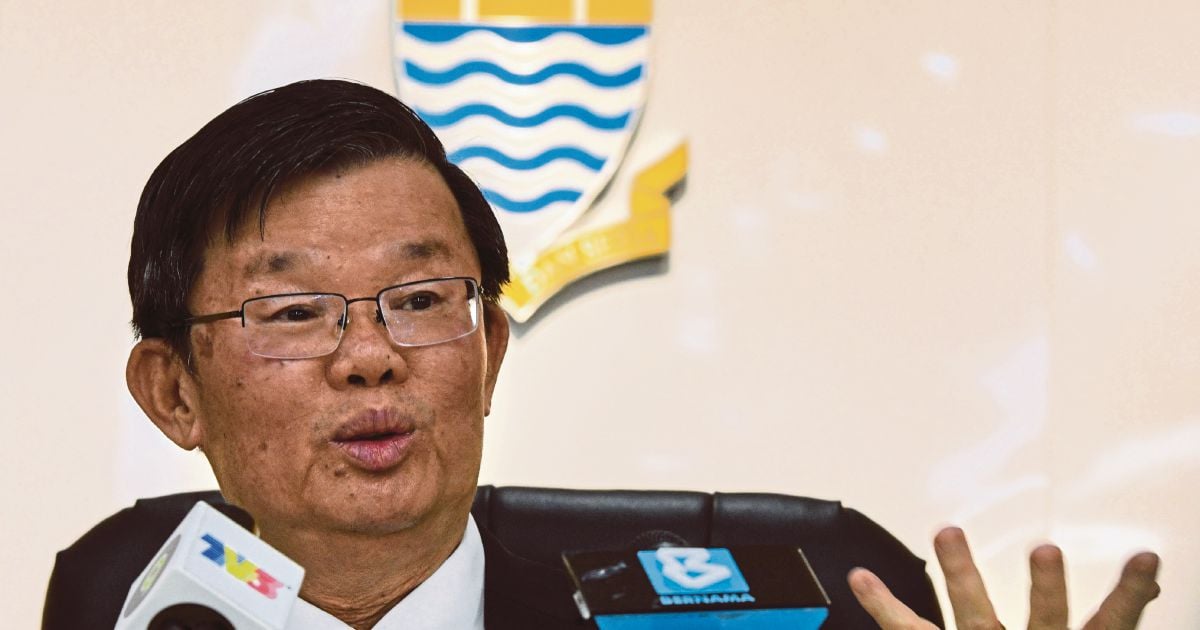GEORGE TOWN: Non-governmental organisations remain sceptical despite assurances given by Chief Minister Chow Kon Yeow that the proposed land reclamation project near Karpal Singh Drive and the restoration works at the Jelutong landfill will not encroach upon the Middle Bank Marine Sanctuary.
Chow had said last week that the state government had taken precautions to ensure the proposed development would not affect the sanctuary.
The Protect Karpal Singh Drive Action Committee, (ProtectKarpal), representing residents from multiple residential communities in the affected area, stand united in their deep concern over the proposed land reclamation project off Karpal Singh Drive, which threatens the ecologically vital Middle Bank Marine Sanctuary.
“Despite assurances from the chief minister that the project will not encroach on the sanctuary, scientific evidence and expert analysis strongly suggest otherwise.
“The Penang Institute, the state’s think tank, has published a report emphasising the sanctuary’s ecological significance and the urgent need for its protection — yet the chief minister’s stance contradicts its findings,” ProtectKarpal’s chairperson A.D. Chandrasekaran said in a statement rebutting Chow’s assurance.
According to the report, the Middle Bank Marine Sanctuary covers 10 sq km in the Strait of Penang and is home to 429 species.
These include seven species of seagrass, crucial for carbon storage and marine habitats, 139 commercial fish species that support local fisheries and livelihoods, and 102 bird species, including migratory species like the endangered Far Eastern Curlew.
It is also home to seven marine mammals, such as dolphins, whales, two species of turtles and 100 mollusc species and 23 arthropods, including critically endangered horseshoe crabs.
This sanctuary is a natural defense system for Penang.
Its ecosystems — seagrass beds, mudflats, and mangroves —provide coastal protection, stabilise the seabed and mitigate climate change by sequestering carbon up to 40 times more effectively than forests.
Chandrasekaran said the proposed project involved reclaiming 70 acres of sea using 5.2 million cubic metres of sand, is perilously close to and encroaches the sanctuary’s boundaries.
“Assuming that the chief minister’s claims of no physical encroachment is true, he also overlooks the indirect, yet devastating impacts reclamation will have on the ecosystem.
“Even without direct overlap, the cascade of indirect impacts — sedimentation, habitat destruction and disrupted currents — will devastate this fragile ecosystem,” he added.
He said Professor Datuk Dr Aileen Tan, director of Universiti Sains Malaysia’s Centre for Marine and Coastal Studies, had warned that the project’s 500-metre buffer zone would encroach into half of the Middle Bank, risking irreparable harm to the seagrass meadows.
He further added that Dr Jilliana Ooi, a marine ecologist from Universiti Malaya, had explained that reclamation alters hydrodynamics, causing siltation and sedimentation that can smother seagrass beds (hydrodynamics).
“These indirect effects — sedimentation, pollution and altered water flow — will extend beyond the project’s physical boundaries, suffocating the sanctuary’s ecosystems and collapsing its biodiversity.
“The chief minister’s assertion that the project poses no threat to the sanctuary is not supported by scientific evidence.
“The sanctuary’s role as a global asset was underscored in 2022 with the discovery of two new sea cucumber species, Euthyonidiella zulfigaris and Acaudinaspinifera. Destroying it would erase a scientific and ecological legacy,” he asserted.
© New Straits Times Press (M) Bhd

